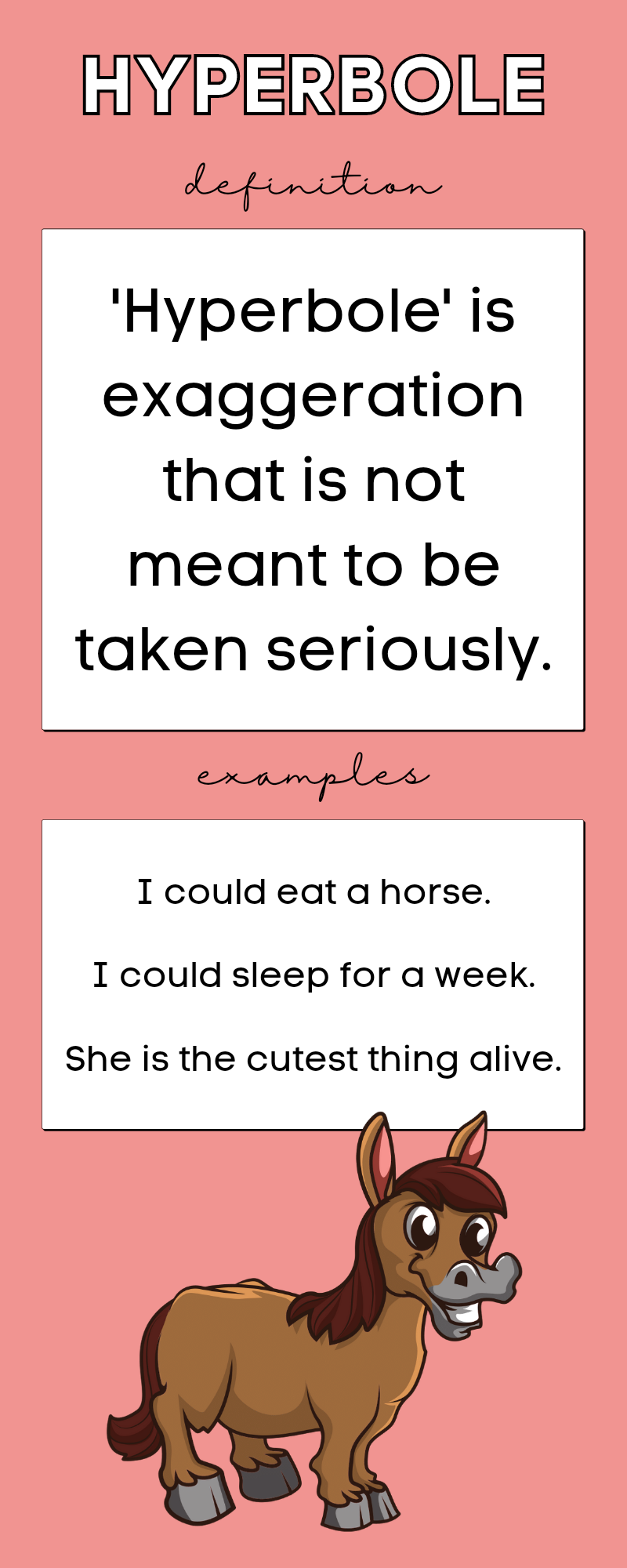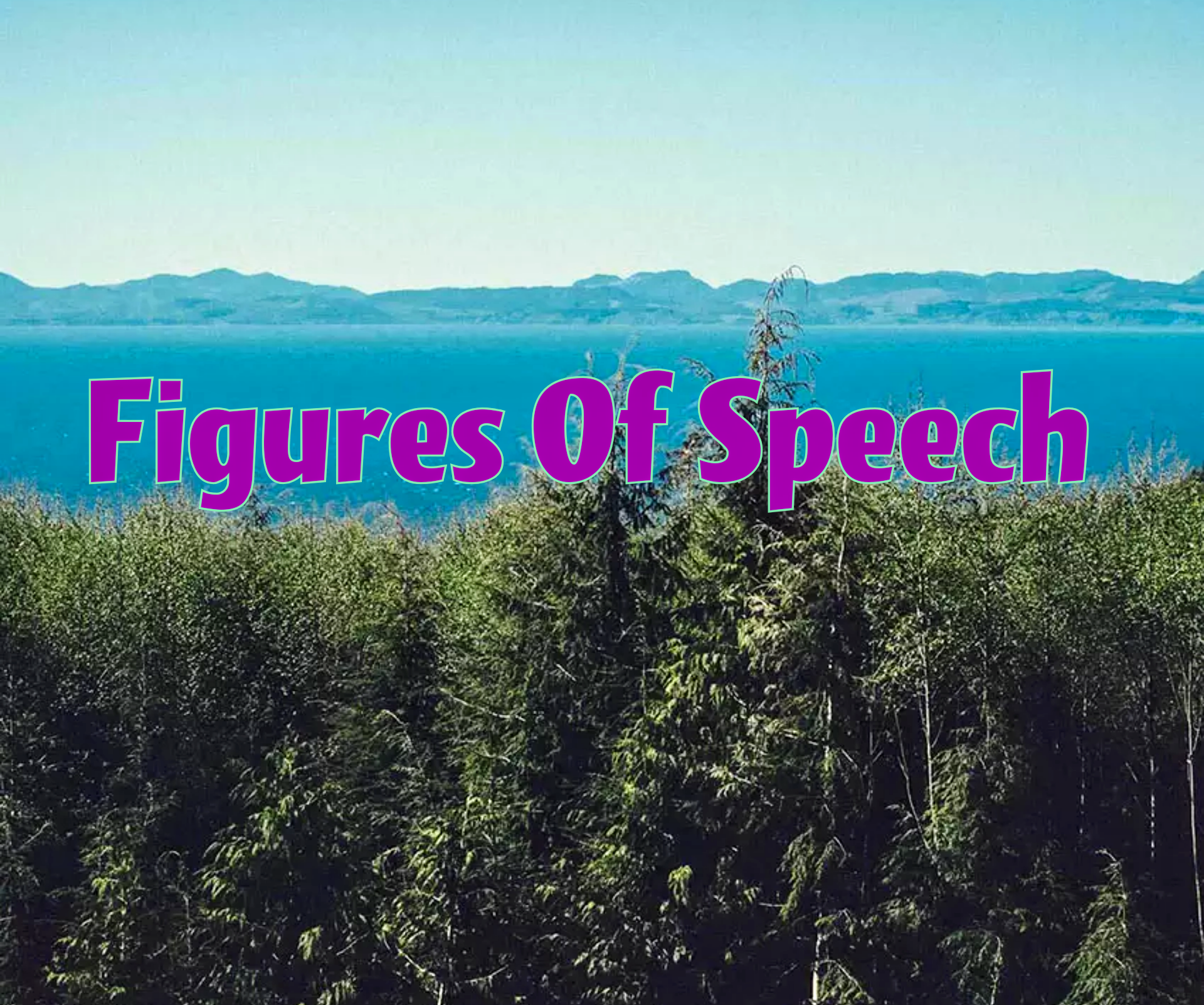Figures of Speech Or Literary Terms
1. Simile: It is a comparison of one thing with another. Or it is an explicit statement of likeness between two different things or actions. A simile is always introduced by such words as ‘Like’, ‘as’, ‘so’, etc
Examples:
(i) Her face was as red as a rose.
(ii) Ram was as brave as a lion.
(iii) He roared like a bull.
(iv) He fought like a demon.
2. Metaphor: A metaphor is an implied simile. In a metaphor, things compared are brought close together.
Examples:
(iii) Life is a dream. :
(iv) Rustum was a lion on the battlefield.
3. Personification: It is a figure of speech in which the attributes of a person are transferred to inanimate or abstract things. In other words, this figure of speech inanimate objects or abstract things or qualities. They are spoken of as if they were persons or human beings. It is a special kind of metaphor.
Examples:
(i) Death lays his icy hands on kings.
(ii) Opportunity knocks at the door but once.
(iv) It (autumn) stripped all trees naked.
4. Irony: Expression of one’s meaning by saying the direct opposite of one’s thoughts in order to be emphatic, amusing, sarcastic, etc.
Examples:
(I,) “That’s really lovely, that is!” he said with heavy irony. (ii) He inherited a fortune but died a month later; one of life’s little ironies.
5. Climax: It is a Greek word, meaning a Ladder. It is a figure in which the sense rises by successive steps to what is more and more important and impressive.
Examples:
(i) I came, I saw, I conquered
(ii) To strive, to seek, to find and not to yield.
(iii) He had the heart to resolve, a head to contrive, a hand to execute.
7. Hyperbole: It is a Greek word signifying ‘Excess’. By this figure, things are represented as greater or less, better or worse than they really are. But it more is said of a thing than is expected to be believed. It is simply an exaggeration of facts.
Examples:
(i) She wept ocean of tears.
(ii) I have not seen him for ages.
8. Alliteration: It consists in the repetition of the letters or sounds at the beginning of two or more words in a line. In this way language becomes musical.
Examples:
(i) With beaded bubbles winking at the brim.
(ii) Swart star sparely looks.
9. Repetition: Intense and strong feelings are also expressed through repetition. Some words, some lines, some expressions are repeated to lend a musical effect.
And like a rabbit, with only one ear,
He played, he played, he played,
10. Antithesis: It is a term applied to the setting of one idea or word against another for the sake of emphasis. It means a balancing of one term against another for emphasis or impressiveness.
Examples:
(I) Man proposes; God disposes.
(ii) United we stand; divided we fall.
(v) To err is human; to forgive divine.
16. Metonymy: The word metonymy means ‘substitution of name’. The figure consists of the substitution of the thing named for the thing meant.
Examples:
(i) Grey hairs (old man or age) should be respected.
(ii) The file was raised to the bench. (The office of Judge)
17. Lyric: A lyric may be defined as a short poem in which a single emotion, usually personal, is expressed. Originally a lyric used to be sung to the accompaniment of a lyre or harp but subsequently, the instrumental accompaniment was dispensed with, though the lyric retained its musical quality.
18. Elegy: An elegy literally means ‘a poem of mourning’ or ‘a song of lamentation for the dead’. An elegy may be of different kinds, personal, impersonal or pastoral. It is partly a lyric and partly a story.
19. Sonnet: The sonnet is invariably a poem of fourteen lines. There are two main types of the sonnet— the Italian or Petrarchan and the
20. Ballad: It is a simple narrative poem in short stanzas. It relates to a story. The theme of the ballad story. The theme of the ballad may be love, hatred, pity war, hunting, the supernatural.
21. Allegory: It is a story or a narrative with a deeper meaning. It is a story symbolizing abstract ideas and values.
22. Imagery: All great poets possess the gift of word painting or imagery. A painter paints pictures with colours but a writer draws pictures with words. A word-picture, therefore, means a phrase, a line, or a passage which brings before our minds a clear picture of someplace, scene or section. A picture is called vivid when we distinctly see the thing drawn by the poet.
Sometimes poets give us what is called sound-pictures. That is, words conveying certain sounds are employed. For instance, the phrases ‘roaring deep’ and ‘clanging fights’ make us actually hear the sounds of a stormy ocean and the battle raging, respectively.
25. Oxymoron: It is a figure of speech in which two contradictory words or phrases are set together for producing stress or effect.
Examples:
(i) Life is bittersweet.
(ii) He is regularly irregular.
26. Hyperbole: Hyperbole is an exaggeration that is not meant to be taken seriously.




